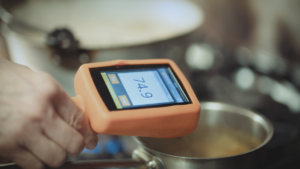Ben Gardner, CEO of Navitas Group, explains how adopting and embracing an effective food safety management system can significantly boost food safety and hygiene practices.
What came first on the road to the five star food hygiene rating? The adherence to food safety and hygiene procedures and other requirements, such as pest control and the general cleanliness of the premises and equipment? Or the implementation of a detailed and well-understood food safety management system?
There’s a misperception that an effective food safety management system arises as a result of other food safety and hygiene procedures and practices already being in place. That it simply means having the right food safety management ‘paperwork’ to track these procedures and does not help prevent food safety issues arising.
While safer operating practices – or a lack of them – do impact directly on the hazards that result from storing, cooking and serving food, it’s an effective food safety management system that creates and cements many of these practices within a business, making them easy to implement and second-nature to staff.
Here’s how a food safety management system, using a combination of hardware and software, can directly impact on the food safety and hygiene practices within your business.
Using smart devices such as probes and temperature monitoring pods linked to cloud-based software, enable the automatic checking of foods from goods inwards – allowing kitchens to return products immediately to the supplier in the case of a problem – through storing and cooking to hot service. Snap-on, snap-off probe needles eradicate contamination between raw and ready to eat foods. Temperature monitoring devices stored in fridges, freezers and chiller cabinets, can monitor, record and report in real-time fridge and freezer temperatures. Readings can be measured to within 0.1 degrees, providing confidence that food is stored at the correct temperature and immediate alerts issued in the event of an appliance failure.
Then there’s the software. Smart devices can feed their information to a database held in the cloud, so that information can be accessed from anywhere. Combining this with the latest food safety management software adds another layer of safety checks. For instance, cleaning checklists and schedules can ensure that all tasks are completed, on a regular and recurring basis. Once a task has been completed, a senior team member checks and sign it off as complete. This gives management the opportunity to ensure that the task has been completed thoroughly and accurately. Any issues highlighted can be corrected by providing staff members with further training.
Finally, easily accessible reports on all of these elements ensure that key food safety metrics are instantly available and ready for a food hygiene inspection.
This combination of hardware and software gives businesses a vital centralised overview and control of food safety in their kitchens that can be accessed around the clock and on the go.
Investing in food safety management is more than a tick in the box for food safety and hygiene compliance purposes. Done properly, it is a way of not only identifying and actively controlling risks and hazards in the food preparation process but also preventing and eliminating them.



